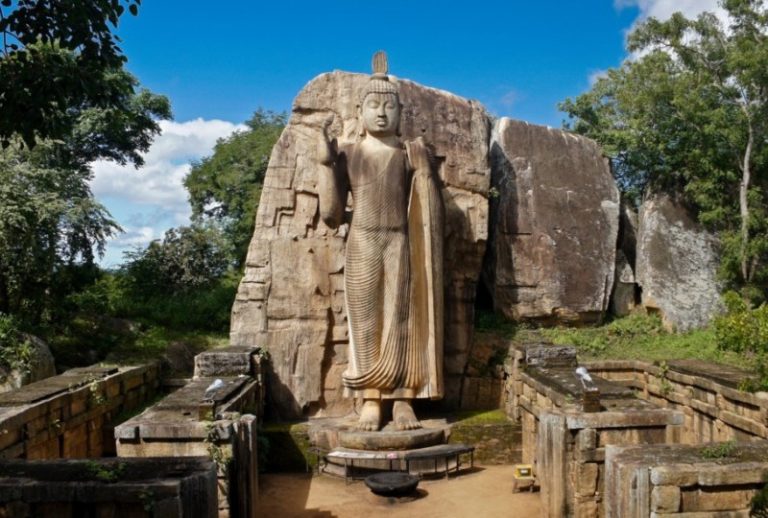Polonnaruwa, located in the North Central Province of Sri Lanka, is a UNESCO World Heritage Site renowned for its rich historical and archaeological significance. Once the thriving capital of medieval Sri Lanka, Polonnaruwa served as the seat of power and cultural centre during the 11th to 13th centuries CE, following the decline of Anuradhapura. Today, it stands as a testament to the island’s glorious past, with its well-preserved ruins and impressive monuments attracting visitors from around the world. Let’s explore the historical city and its key tourist attractions:
Royal Palace of King Parakramabahu I:
The Royal Palace complex, built by King Parakramabahu I, is one of Polonnaruwa’s most prominent attractions. Situated in the heart of the ancient city, the palace once served as the administrative and residential quarters of the ruling monarch.
Visitors can explore the remains of the grand audience hall, council chamber, and royal residence, marvelling at the architectural ingenuity and intricate carvings that adorn the structures.
Gal Vihara:
Gal Vihara, also known as the Rock Temple, is famed for its colossal Buddha statues carved into the granite rock face. These magnificent sculptures, crafted during the reign of King Parakramabahu I, showcase the exceptional skill of ancient Sri Lankan artisans.
The highlight of Gal Vihara is the towering standing Buddha statue, reaching a height of over 7 meters, along with a reclining Buddha and two seated Buddha figures, each exuding serenity and grace.
Polonnaruwa Vatadage:
The Polonnaruwa Vatadage is an ancient circular relic shrine constructed to enshrine the sacred Tooth Relic of the Buddha. This architectural masterpiece features intricately carved stone pillars, moonstones, and guard stones, reflecting the artistic brilliance of the Polonnaruwa period.
The Vatadage served as a centre of religious worship and pilgrimage, drawing devotees from far and wide to pay homage to the revered relic housed within its sanctum.
Statue of King Parakramabahu I:
The imposing statue of King Parakramabahu I, located near the Royal Palace complex, is a testament to the king’s vision and leadership during the height of Polonnaruwa’s glory. The statue depicts the monarch in a regal posture, symbolizing his benevolent rule and patronage of the arts and culture.
Rankoth Vehera:
Rankoth Vehera, meaning the “Golden Pinnacle Stupa,” is one of the largest stupas in Polonnaruwa, standing as a symbol of religious devotion and architectural splendour. Built by King Nissanka Malla, the stupa rises majestically amidst the surrounding landscape, offering panoramic views of the ancient city.
Archaeological Museum:
The Archaeological Museum of Polonnaruwa provides visitors with insights into the city’s history and heritage through its extensive collection of artifacts, sculptures, and relics unearthed from the archaeological sites. Exhibits include intricately carved stone inscriptions, pottery, and ancient artifacts that shed light on the daily life and cultural practices of the Polonnaruwa period.
Polonnaruwa’s historical city and tourist attractions offer a fascinating glimpse into Sri Lanka’s medieval past, showcasing the architectural marvels, religious monuments, and artistic treasures of a bygone era. Whether exploring the ancient ruins, admiring the Buddhist sculptures, or soaking in the serene ambiance of the sacred sites, visitors to Polonnaruwa are treated to a memorable journey through time and history.

